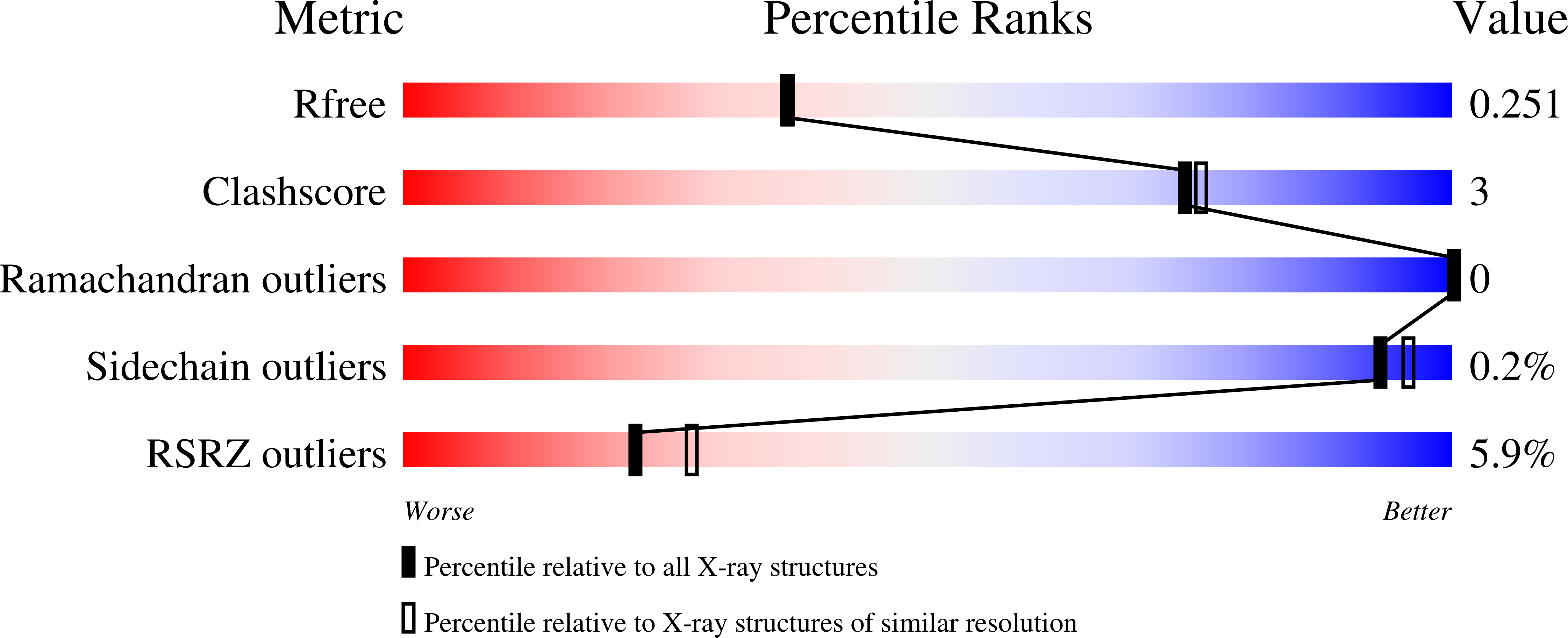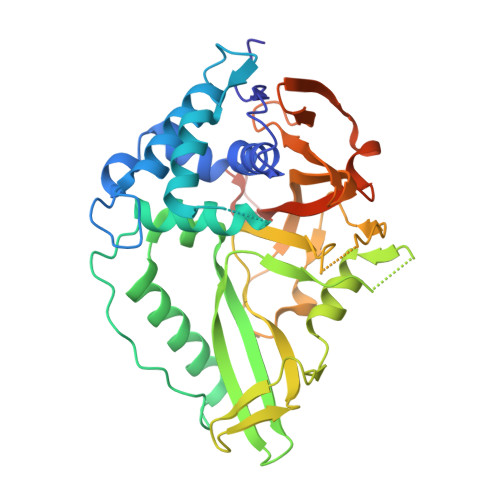The structure of the deubiquitinase USP15 reveals a misaligned catalytic triad and an open ubiquitin-binding channel.
Ward, S.J., Gratton, H.E., Indrayudha, P., Michavila, C., Mukhopadhyay, R., Maurer, S.K., Caulton, S.G., Emsley, J., Dreveny, I.(2018) J Biol Chem 293: 17362-17374
- PubMed: 30228188
- DOI: https://doi.org/10.1074/jbc.RA118.003857
- Primary Citation of Related Structures:
6GH9, 6GHA - PubMed Abstract:
Ubiquitin-specific protease 15 (USP15) regulates important cellular processes, including transforming growth factor β (TGF-β) signaling, mitophagy, mRNA processing, and innate immune responses; however, structural information on USP15's catalytic domain is currently unavailable. Here, we determined crystal structures of the USP15 catalytic core domain, revealing a canonical USP fold, including a finger, palm, and thumb region. Unlike for the structure of paralog USP4, the catalytic triad is in an inactive configuration with the catalytic cysteine ∼10 Å apart from the catalytic histidine. This conformation is atypical, and a similar misaligned catalytic triad has so far been observed only for USP7, although USP15 and USP7 are differently regulated. Moreover, we found that the active-site loops are flexible, resulting in a largely open ubiquitin tail-binding channel. Comparison of the USP15 and USP4 structures points to a possible activation mechanism. Sequence differences between these two USPs mainly map to the S1' region likely to confer specificity, whereas the S1 ubiquitin-binding pocket is highly conserved. Isothermal titration calorimetry monoubiquitin- and linear diubiquitin-binding experiments showed significant differences in their thermodynamic profiles, with USP15 displaying a lower affinity for monoubiquitin than USP4. Moreover, we report that USP15 is weakly inhibited by the antineoplastic agent mitoxantrone in vitro A USP15-mitoxantrone complex structure disclosed that the anthracenedione interacts with the S1' binding site. Our results reveal first insights into USP15's catalytic domain structure, conformational changes, differences between paralogs, and small-molecule interactions and establish a framework for cellular probe and inhibitor development.
Organizational Affiliation:
From the Centre for Biomolecular Sciences, School of Pharmacy, University of Nottingham, Nottingham NG7 2RD, United Kingdom.

















